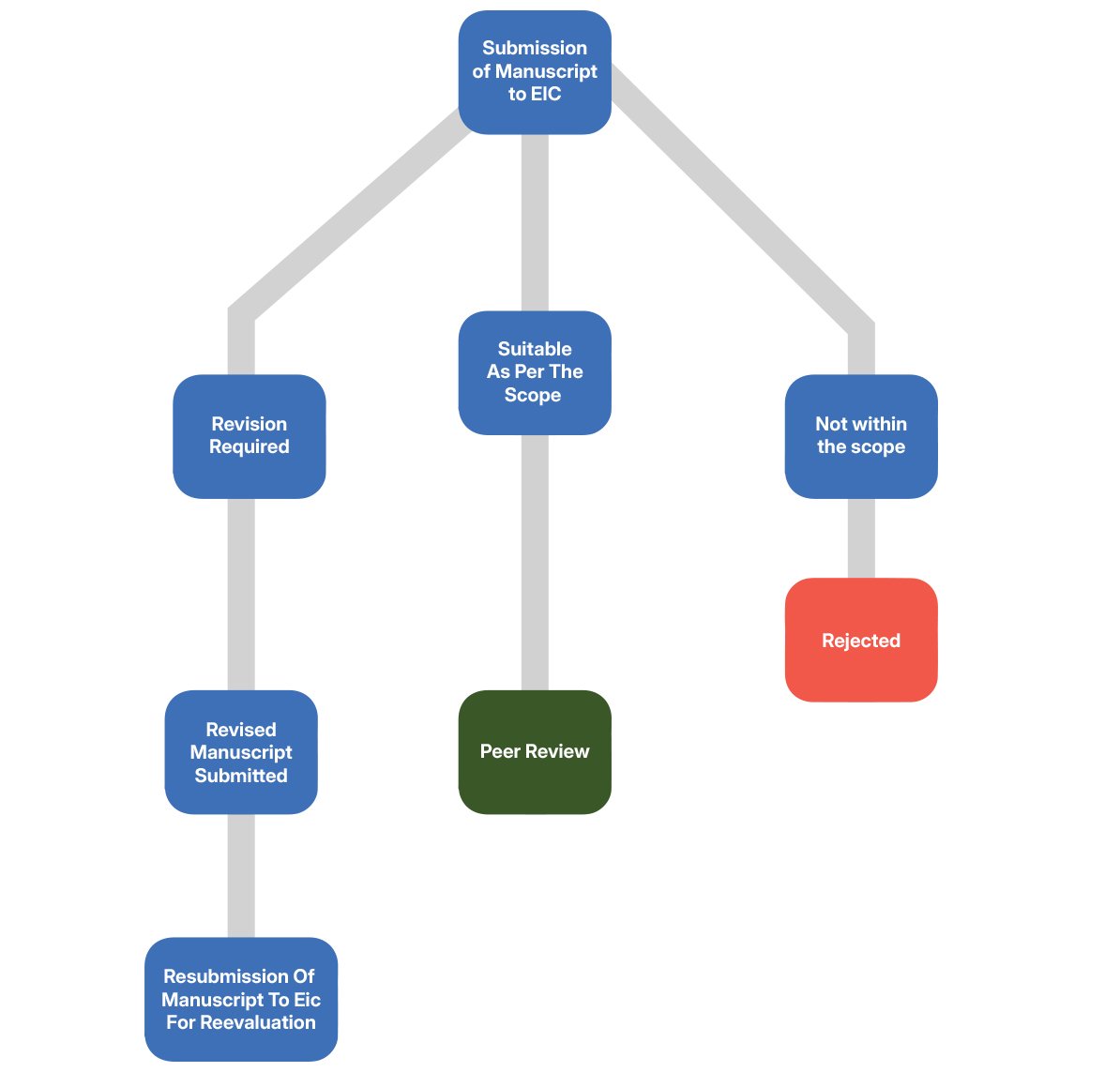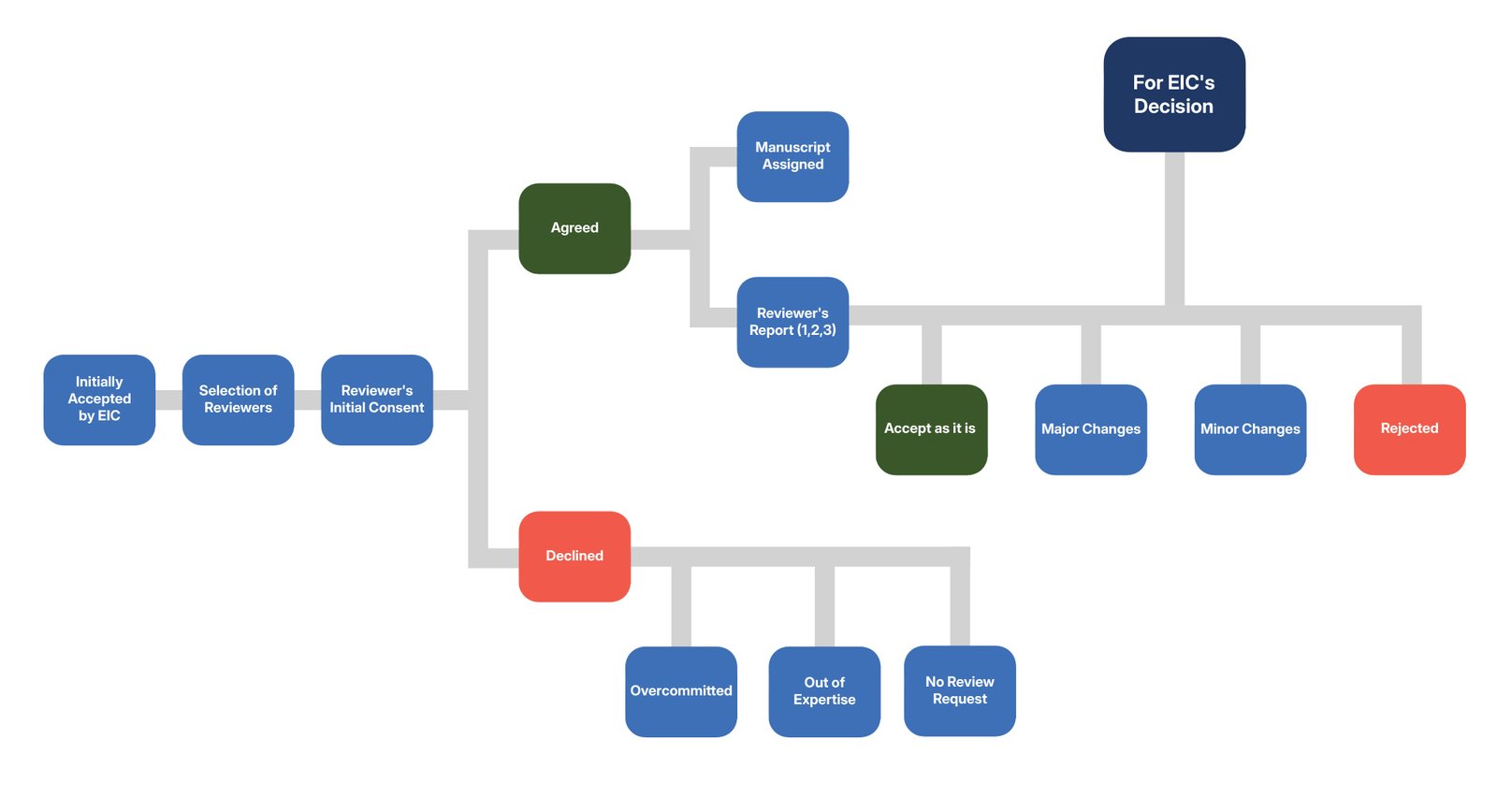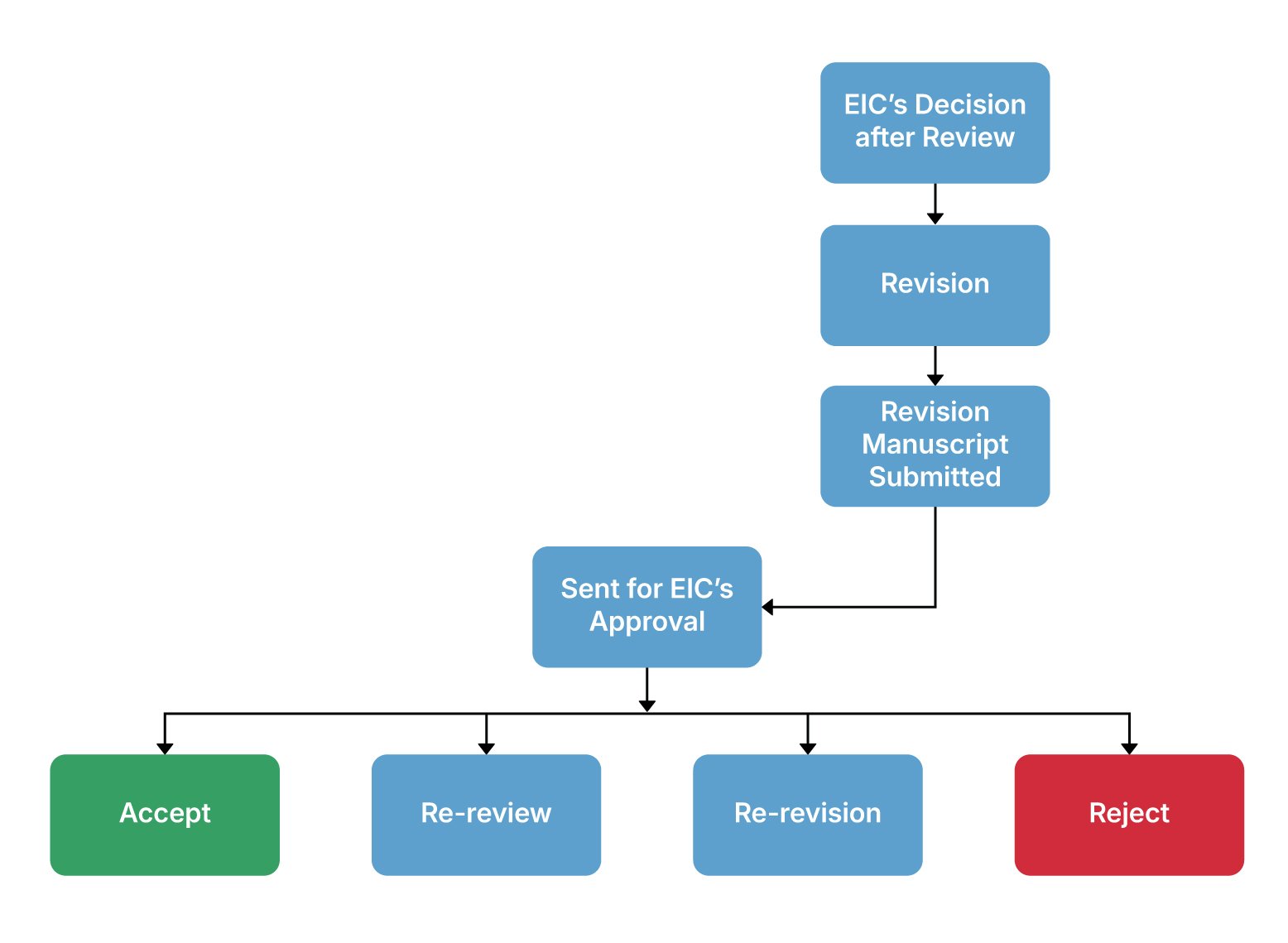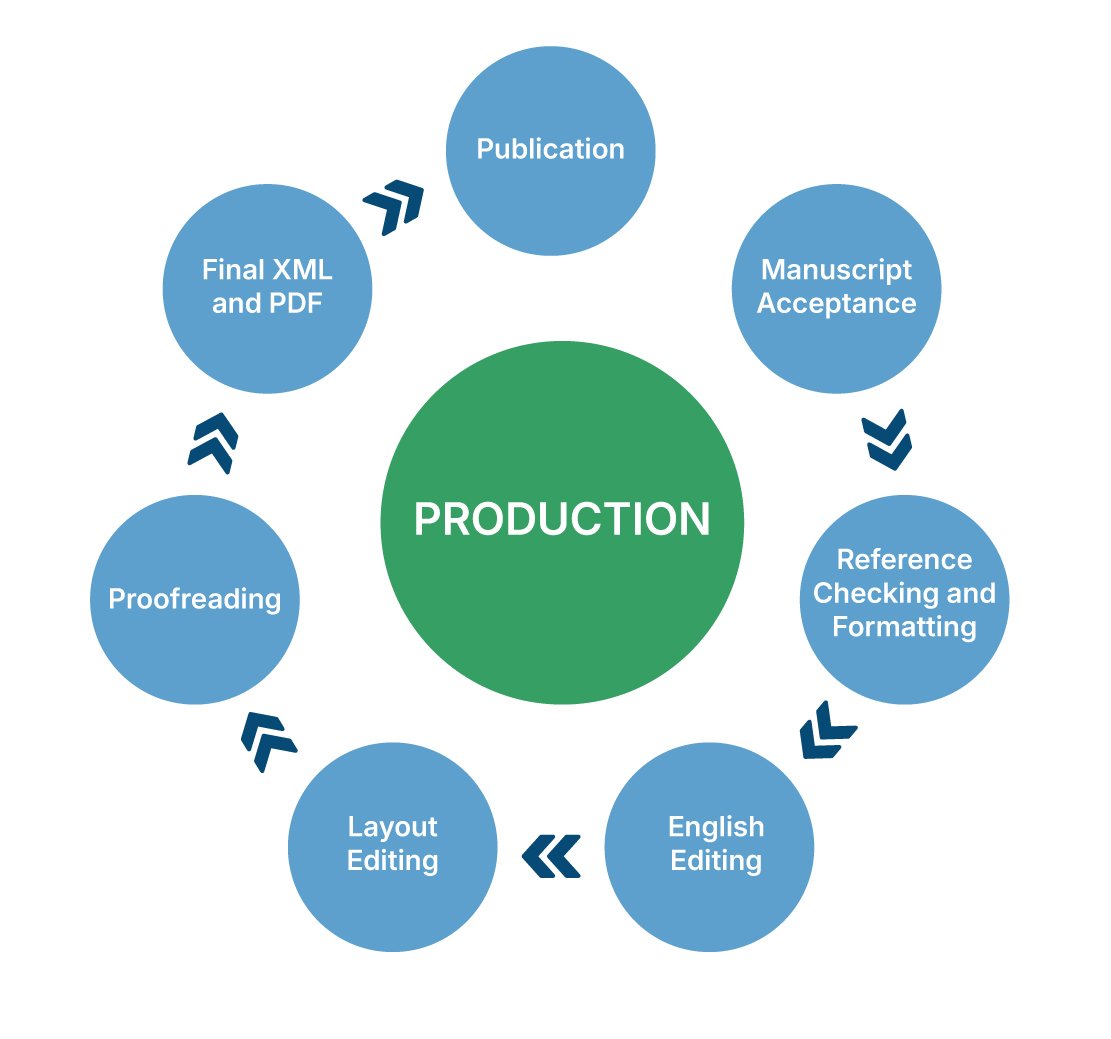When submitting your manuscript, please utilize the designated online submission platform (OJS LINK) provided by the journal. Upon submission, your manuscript will be assigned a unique Manuscript Number, and an automated confirmation will be sent to all authors, acknowledging receipt by the journal’s Editorial Office. The manuscript will then proceed through the following editorial process:
Initial Review
The initial review is conducted in three key stages:
Technical Evaluation
Upon submission, the manuscript undergoes an initial evaluation to ensure it adheres to the journal’s guidelines, including those related to conflicts of interest, reporting standards, acknowledgments, author details, and copyright permissions. If any information is found to be incomplete or non-compliant, authors will be requested to provide the necessary revisions.
Content Assessment
This stage involves a thorough evaluation of the manuscript’s content quality.

Plagiarism Assessment
After the technical review, the manuscript undergoes plagiarism detection through Turnitin to ensure originality. This is paired with a review of the author’s credentials.
Verification of Author Identity
Peer Review
Once the Editor-in-Chief conducts an initial review, the manuscript enters the peer review stage. In collaboration with the Editor-in-Chief, the manuscript is assigned to relevant members of the Editorial Board or other qualified experts in the subject area. The journal maintains a strict policy to prevent conflicts of interest between reviewers and authors. In cases where conflicts arise, the reviewer is promptly replaced. Typically, manuscripts receive two to three review reports, after which the Editor-in-Chief makes a decision based on the feedback. Reviewers’ comments are only shared with the editorial team and not with the authors. All revision, acceptance, or rejection decisions are thoroughly justified. Reviewer comments are typically shared with the authors, though some may be edited to maintain anonymity and a constructive tone.

Editor-in-Chief Decision and Manuscript Revision Process
The Editor-in-Chief evaluates the reviewers’ feedback to determine if the manuscript will be accepted, rejected, or revised. Authors will be informed of the decision, and if revisions are required, they must submit a revised manuscript along with a detailed response letter within seven days, unless an extension is granted. Authors should address all comments and suggestions comprehensively, with responses clearly indicating any changes made or providing reasons for any disagreements. Revised manuscripts should include a new cover letter detailing point-by-point responses. Minor revisions are reviewed by the editor, while major revisions are sent back to the original reviewers for further evaluation. A maximum of two rounds of major revisions are allowed. After revision, the manuscript may be accepted, sent for further revisions, or re-reviewed by the same reviewers. If the reviewers are unresponsive, an alternative reviewer will be assigned. Failure to resolve significant concerns within two revision cycles will lead to rejection. If the revision process exceeds 45 days, authors are advised to withdraw and resubmit the manuscript as a new submission.

Content Assessment
Before manuscript revisions, a detailed review ensures compliance with international standards and journal guidelines, including evaluating figure quality. Authors are notified if figure quality is substandard and asked to submit improvements. Manuscripts cannot proceed to production until all requirements are met, which allows authors to address both reviewer feedback and any additional concerns during the revision stage.Author Appeal Process
Authors wishing to appeal a rejection must submit a formal request to the Editorial Office, detailing their justification and responding to the reviewers’ or Editor’s comments using the designated appeal form. Appeals are only accepted after a “reject and decline resubmission” decision and must be filed within three months. After submission, the manuscript is reviewed by an Editorial Board member, who provides a recommendation to the Editor-in-Chief. The Editor-in-Chief’s decision following the appeal is final.
Production Process
After acceptance, the manuscript is assigned a DOI and enters the production phase, which includes language editing, typesetting, proofreading, and preparation of figures and tables.

Reference Verification and Formatting
The Editorial Office ensures references are formatted according to academic standards and verifies their accuracy. Authors may be asked to correct formatting discrepancies or revise references if necessary.
English Editing
The Editorial Office ensures references are formatted according to academic standards and verifies their accuracy. Authors may be asked to correct formatting discrepancies or revise references if necessary.
Layout Editing
Once language editing is complete, the manuscript undergoes layout editing to meet the journal’s formatting requirements, including font adjustments and figure placement. The manuscript is then converted into a PDF for author review.
Proofreading
In the final stage, a thorough proofreading is done to correct any remaining errors. Authors are asked to review and approve any changes made after layout editing.
Online Publication
Accepted articles are published online in PDF and XML formats. Corresponding authors’ contact details are included in a press release service to increase visibility and attract global media attention.

